Term 3 Unit 1 | Geography | 6th Social Science - Europe | 6th Social Science : Geography : Term 3 Unit 1 : Asia and Europe
Chapter: 6th Social Science : Geography : Term 3 Unit 1 : Asia and Europe
Europe
Part – B
Europe
Europe is the sixth largest continent in size
and the third largest in population in the world. It has diverse landforms and
people. It is the birth place of western civilizations (Roman and
Greek), democracy and Industrial Revolution. It is the
most developed continent in the world. Let us explore the continent.
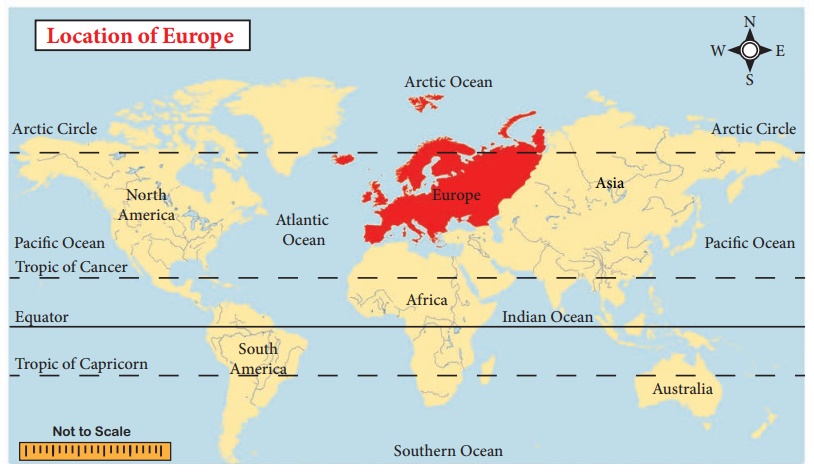
Location and size
Europe spreads from
34º 51' North latitude to 81º 47' North latitude and from 24º33'
West longitude to 69º 03' East longitude. The Prime Meridian
0º longitude passes through Greenwich in England.
Europe is found in
the northern hemisphere and it covers an area of 10.5 million sq.km. It is
surrounded by the Arctic Ocean in the North, the Black Sea and Mediterranean
Sea in the south, the Atlantic Ocean in the west and the Ural mountains in the
east. So it looks like a giant peninsula.
HOTS :
Europe is called as the 'Peninsula
of Peninsulas', Justify.
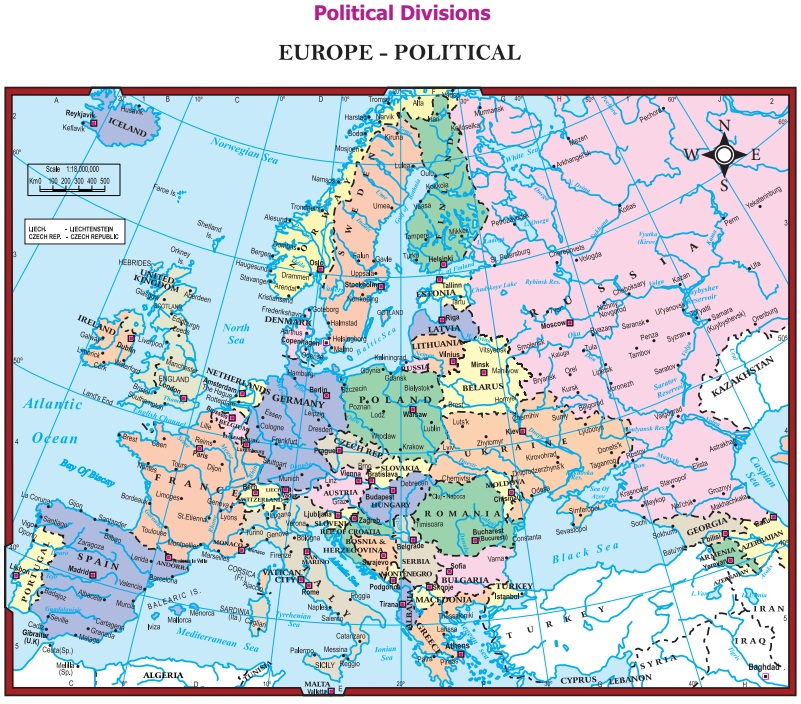
European Union :
The European Union (EU) is an
economic and political union of 28 member countries for their welfare.
It has own flag and the common currency, the Euro (€).
Fact :
The Netherlands : About 25 percent of the Netherlands lies below sea level. So
they have built dikes. They have reclaimed new land from the sea with the help
of dikes. These reclaimed lands are called polders.
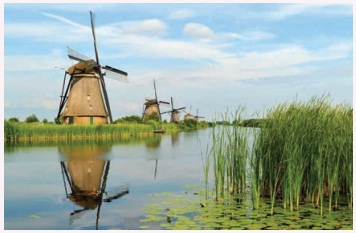
Physical
Divisions
Europe has diversified physical features such as
mountains, plains, plateaus, peninsulas, bays, islands and river basins. It can
be divided into four physical divisions.
1. The North Western Highlands
2. The Central Plateaus/High land
3. The Alpine Mountain system
4. The North European plains
1. The North Western highlands
This region includes the mountains and plateaus of
Norway, Sweden, Finland, Scotland and Iceland. This region has the most
beautiful fjord coast. It was
created by glaciations in the past. This region has a lot of lakes, which serve
as reservoirs for producing hydroelectricity. Norway and Sweden are the largest
producers of hydroelectricity in the world.
Fact :
Fjord : A fjord is a narrow and deep sea inlet between steep cliffs. It
helps in the following ways.
1. It reduces the speed of wind,
irrespective of its direction.
2. The force of sea waves are also
controlled.
Hence, areas with fjords are best
suited for natural harbours.
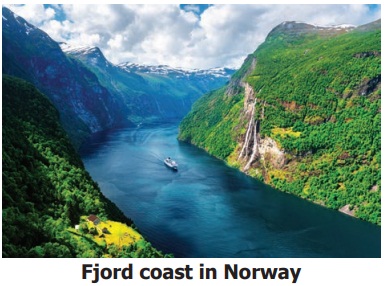
2.
The Central Plateaus
The plateaus are
found in east west direction across central Europe. Many rivers in Europe such
as, the Danube, the Volga and the Tagus originate from this plateau. The
important plateaus of this region are The Pennines (England), The Meseta
(Spain), The Central Massif and Jura (France). The Black
forest (Germany) in these region has rich mineral resources. The Pennines
is called the backbone of England.
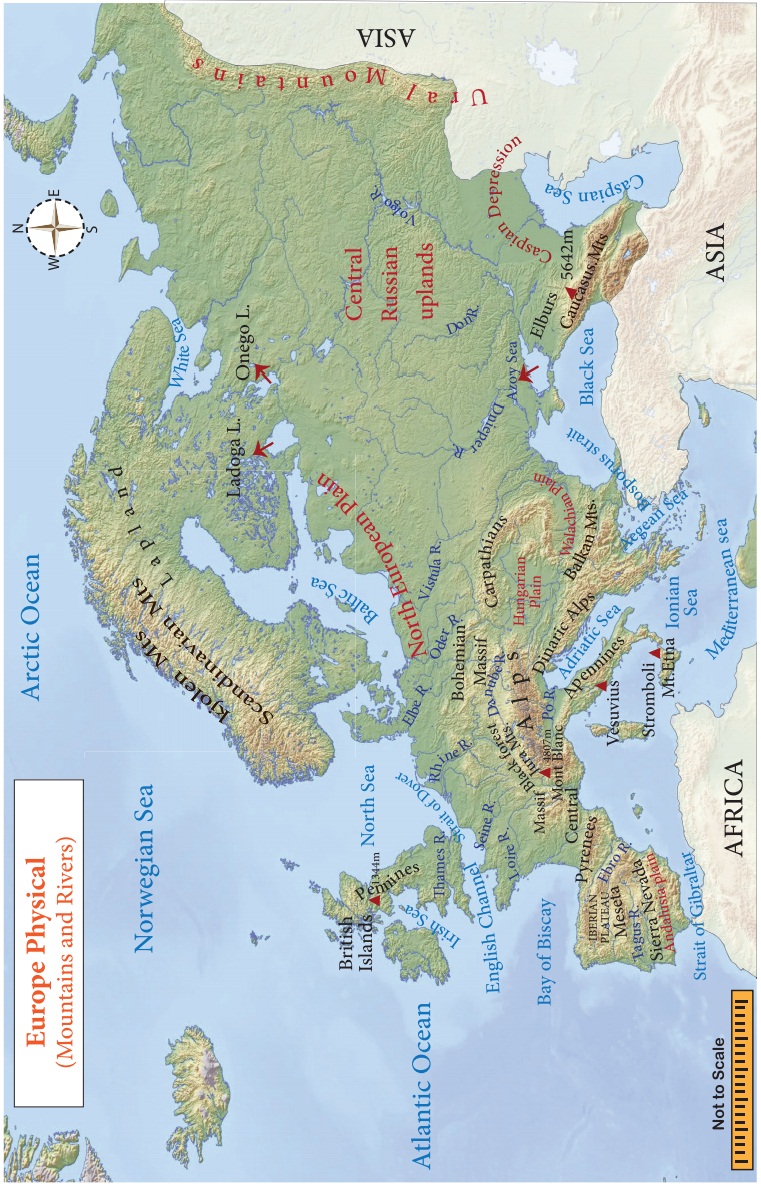
Black forest: The lush and dark coloured fig and pine trees give black colour
to this region.
3. The Alpine Mountain System:
The alpine mountain
system consists of a chain of young fold mountains found in the southern part
of Europe. The important mountain ranges are the Sierra Nevada, the Pyrenees,
the Alps, the Apennines, the Dinaric Alps, the Caucasus and the
Carpathian. The Pyrenees forms a natural boundary between Spain and
France.
The highest peak in
Europe is Mt. Elburz (5645 m) in the Caucasus range. The Mont
Blanc (4,807 m) found in the Alps is the second highest peak in the Alpine
System.
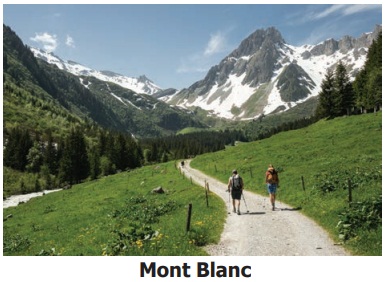
There are several active volcanoes found in the
Alpine mountain system. Mt. Etna, Mt. Vesuvius and Mt. Stromboli are
the important volcanoes found in Europe.Earthquakes are common in this region.
The Stromboli is called the 'light house of the Mediterranean'.
The Matterhorn :
The pyramid-shaped Matterhorn
mountain is located in the Swiss Alps a height of 4478 m. It is popular for its
shape.
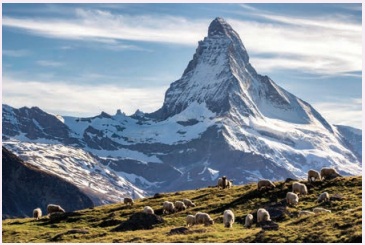
4. The North European plain
The north European plain stretches from the
Atlantic Ocean in the west to the Ural mountains in the east. On the north, it
is surrounded by the Baltic Sea and on the South by the alpine mountain. It is
narrow in the West and wide towards the East. Major European rivers such as the
Seine, the Rhine, the Danube and the Don criss-cross this region and deposit
their alluvium.
The Andalusian
Plain, The Hungarian Plain and the Wallachian Plain are also
found in this region. It has rich deposits of coal and iron ore. The
north European plain is densely populated region and cities like Paris,
Moscow and Berlin are located here.
Drainage
The rivers play an important role in the
development of Europe. These rivers are used to irrigate farmland and also help
to produce electricity.
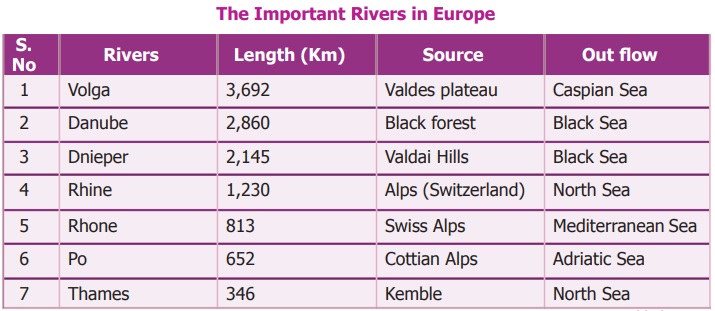
Most of the rivers
originate in the Alps and the central plateau of Europe. These rivers are
useful for inland navigation in central and Eastern Europe. The Volga is
the longest river in Europe. The river Danube passes through nine
countries in Europe.
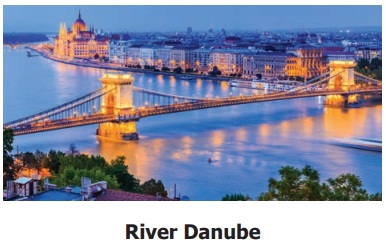
HOTS : Why are European rivers suitable for inland navigation?
Climate
The climate of
Europe varies from the subtropical to the polar climate. The Mediterranean
climate of the south has warm summer and rainy winter. The western
and northwestern parts have a mild, generally humid climate,
influenced by the North Atlantic Drift. In central and eastern Europe,
the climate is humid continental-type. In the northeast, subarctic
and tundra climates are found. The whole of Europe is subject to the moderating
influence of prevailing westerly winds from the Atlantic Ocean.
Climate Divider: The Alps mountain separates the Mediterranean climate from the
cold climate of the north.
Fact
North Atlantic Drift is a warm ocean current which brings warmth to the western
Europe. The westerly wind further transports warmth across Europe.
Natural
vegetation
The natural vegetation of Europe can be classified
as follows:
1. Tundra
2. Taiga or Coniferous
3. Mixed Forest
4. Mediterranean Forest
5. Grassland
The Arctic and northern Scandinavian highland have
Tundra type of vegetation made up of lichens and mosses.
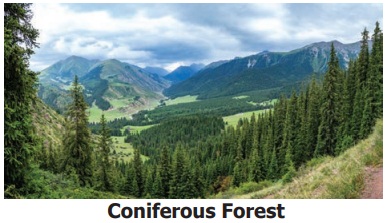
Coniferous or Taiga
vegetations are found to the south of the Tundra region in Norway, Sweden,
Finland, Germany, Poland and Austria. Pine, fir, spruce and larch
are the important tree varieties of taiga forest.
The mixed forest
comprising of birch, beech, poplar, oak and maple trees found
in the western part of Europe particularly in western France, Belgium, Denmark,
Britain etc. Mediterranean trees like cypress, cork, oak,
olive and cedar are found along the borders of the Mediterranean
Sea. Eastern Europe is covered by grasslands (Steppe).
Resources Base and Economic Activities of Europe
Availability of
resources, efficient educated work force, research, contact with other nations
and innovations have transformed Europe into a modern and economically developed
continent in the world.
Europe is an
industrially developed continent in the world. It has great diversity in its
topography, climate and soil. These interact to produce varied patterns of
agricultural activities such as Mediterranean agriculture, Dairy farming,
mixed livestock and crop farming and horticulture (Truck Farming)
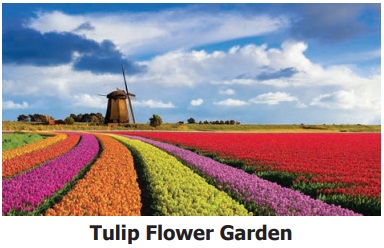
Wheat is the dominant crop throughout Europe. Barley,
Oats, sugar beet, rye, potatoes and hay are also common
crops. Corn (maize) is an important crop in the lower Danubian lowlands
and southwestern European Russia, France and Italy. Rice (northern
Italy) and citrus fruits, olive trees (Spain, Sicily) depend on
irrigation.
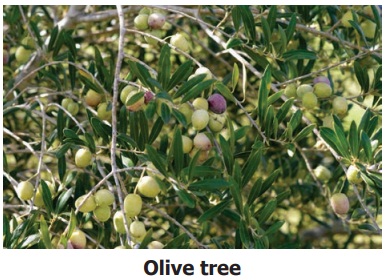
The northernmost
countries grow few cereals (mainly oats) and concentrate on animal husbandry,
especially cattle and dairying. Mixed farming and the use of well-tried crop
rotations are widely practised. Viticulture is mostly practised in
Italy, France and Germany.
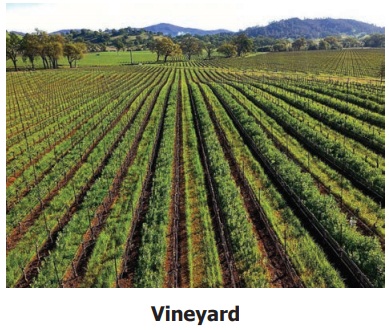
As for industrial
crops, European Russia, Ukraine, and Belarus are large producers of flax
and hemp, sugar beets and sunflower seeds. Tobacco is
grown in Belarus and is also important in Bulgaria, Italy, and Macedonian
Greece.
European Russia,
Sweden and Finland are the major producers of softwood and hardwood. Fishing is
a large industry in Norway, Iceland, Russia, Denmark, the United Kingdom, the
Netherlands etc., The Dogger Bank in North Sea is an important fishing
ground in Europe.
Industries
Europe produces a significant portion of the
world’s steel and iron ore. Shipbuilding, motor-vehicle and aircraft
construction are widely distributed all over Europe. Europe is also a large
producer of pharmaceutical drugs.
A wide range of small-scale industries (i.e.,
those that produce nondurable goods) is found throughout Europe. Some countries
have a reputation for specialty goods, as in the case of English, Italian, and Dutch bicycles, Swedish and Finnish glass,
Parisian perfumes and fashion goods and Swiss precision instruments
Cultural Mosaic of Europe
Europe is the third most populous continent, after
Asia and Africa. The population of Europe was 742 million in 2018, which
accounted for 9.73% of the world’s population. The population density in Europe
is 34 persons / km2.
High population density is often associated with
the coalfields of Europe. Other populous areas are sustained by mining,
manufacturing, commerce, offering large market, labour forces and productive
agriculture. Monaco, Malta, San Marino, and the Netherlands are the most
densely populated countries; Iceland and Norway have very low density of
population. In general, population is scantiest in the mountain regions, some
highlands, arid parts of Spain and the Arctic regions of Russia. Monaco has the
highest density of population in Europe (26,105 persons / km2) as
well as in the world. Iceland has a very low density of population (3 persons/
km2).
Religion
& Language
Europe is a continent of great linguistic and
cultural difference. English, Spanish, Portuguese, French, Italian and Slavic
are the broadly spoken languages in Europe. Christianity is the major religion
in Europe. A considerable number of Hindus, Muslims and Jews are spread
throughout Europe. More than 90 percent of the people belong to the Caucasoid
race.
Art and
Architecture
European art and
architecture mostly reveals the ordinary human being and is popular all over
the world. Acropolis, the Colosseum, the statue of David, The thinker,
Eiffel tower, Big Ben, Pisa Tower and
Mona Lisa are some of the master
pieces of art and architecture in Europe.
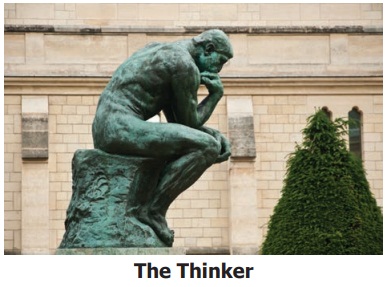
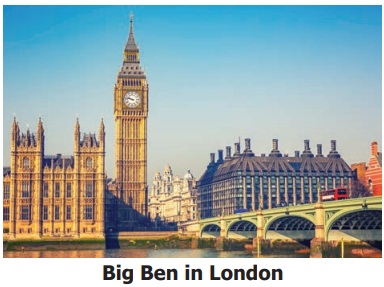
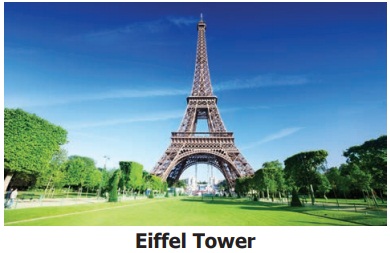
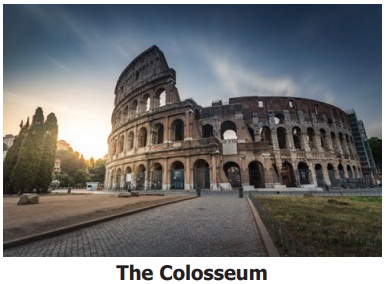
Food and
Festivals
Bread, fish, meat, potatoes and dairy products are
the staple food in Europe. The Europeans celebrate both religious and holiday
festivals. Christmas, Easter, Good Friday, the Saint Day, Redentore, Tomatina
and Carnival are the important festivals of Europe. They play Rugby, foot ball,
basket ball, ice hockey and skiing. Bull fighting in Spain is the world's
attractive game.
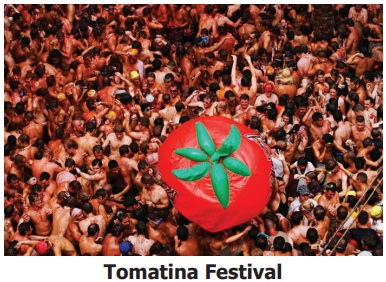
A Comparison
of Asia and Europe
Asia and Europe are integrated geographically and
separated politically. Europe is the giant peninsula of Asia. Both the
Himalayas (Asia) and the Alps (Europe) were formed during the same geological period.
The Steppe grass lands and coniferous forests are spread over several
hundred kilometres from Europe to Asia. Generally, the plains are found in the
northern part and the mountains in the southern part in both the continents.
The two continents are the homeland of ancient civilizations. From the ancient
period,
these two continents had trade relationship
through the silk route and the spice route. Despite the various geographical
similarities, these two continents have striking differences.
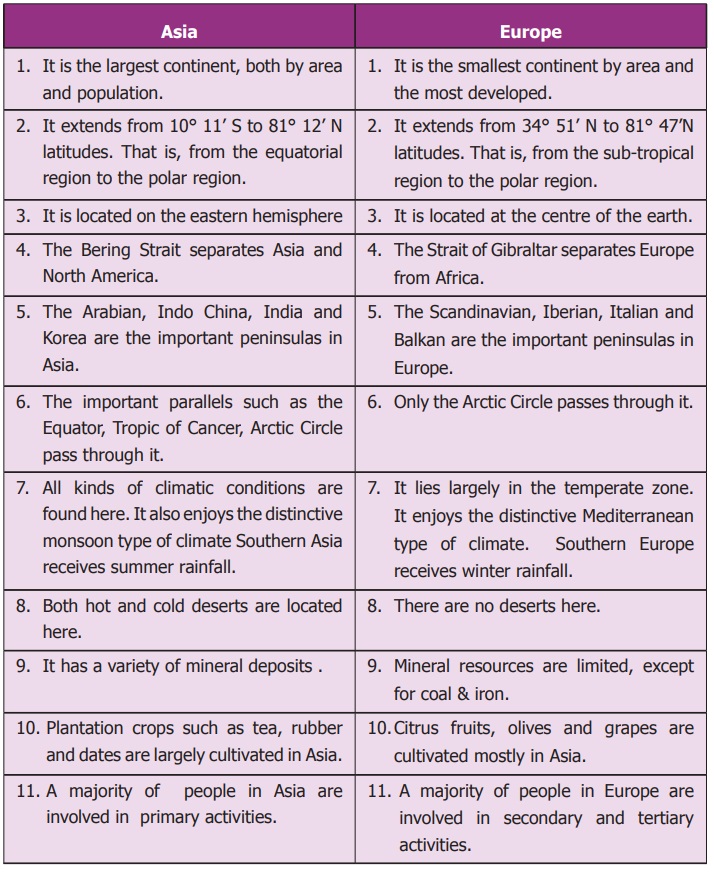
Related Topics